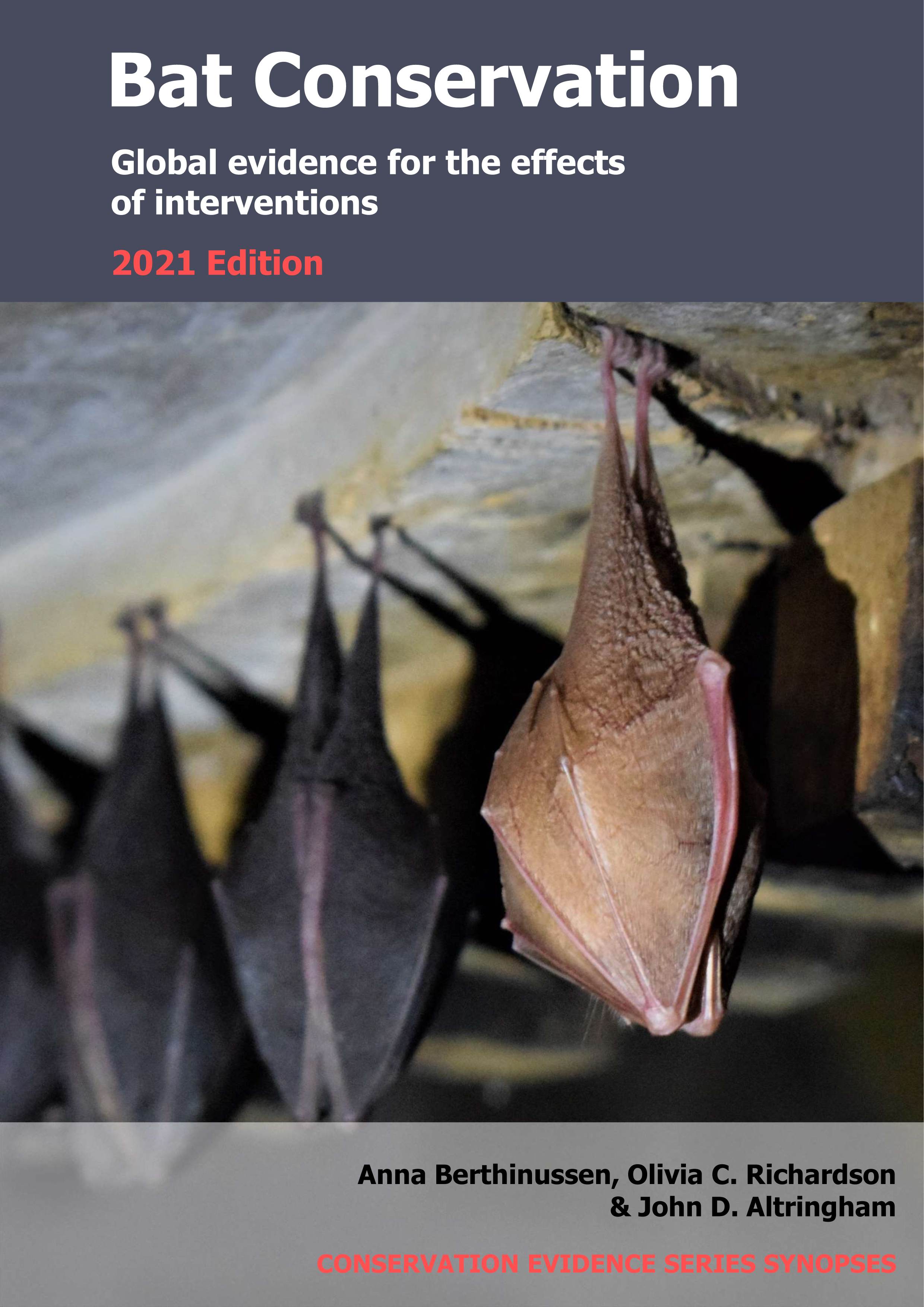Reinstate bat roosts in felled tree trunks
-
Overall effectiveness category Unknown effectiveness (limited evidence)
-
Number of studies: 1
View assessment score
Hide assessment score
How is the evidence assessed?
-
Effectiveness
35% -
Certainty
10% -
Harms
0%
Study locations
Supporting evidence from individual studies
A before-and-after study in 2009–2013 in a broadleaf woodland in Milton Keynes, UK (Damant & Dickens 2013) found that a roost reinstated by attaching the felled tree trunk to a nearby tree continued to be used by common noctule bats Nyctalus noctula as a maternity roost. A similar number of bats used the roost before (47–75 bats) and after (37–46 bats) felling and reinstatement of the roost, although no statistical tests were carried out. The roost was in an ash Fraxinus excelsior tree within a 23-ha ancient semi-natural woodland. The tree was accidentally felled in December 2011. The tree trunk was reinstated within five days of felling by attaching it to a nearby tree using 19 mm steel banding and rubber straps. The access points were orientated to recreate their original positions prior to felling. A replacement top was constructed from ash wood to shelter the roost. The reinstated section and top were 3.4 m high x 0.5 m wide. Emergence counts were carried out at the roost twice in 2010 before felling and once/year in 2012 and 2013 after reinstatement.
Study and other actions tested
Where has this evidence come from?
List of journals searched by synopsis
All the journals searched for all synopses
This Action forms part of the Action Synopsis:
Bat Conservation
Bat Conservation - Published 2021
Update 2020





)_2023.JPG)














